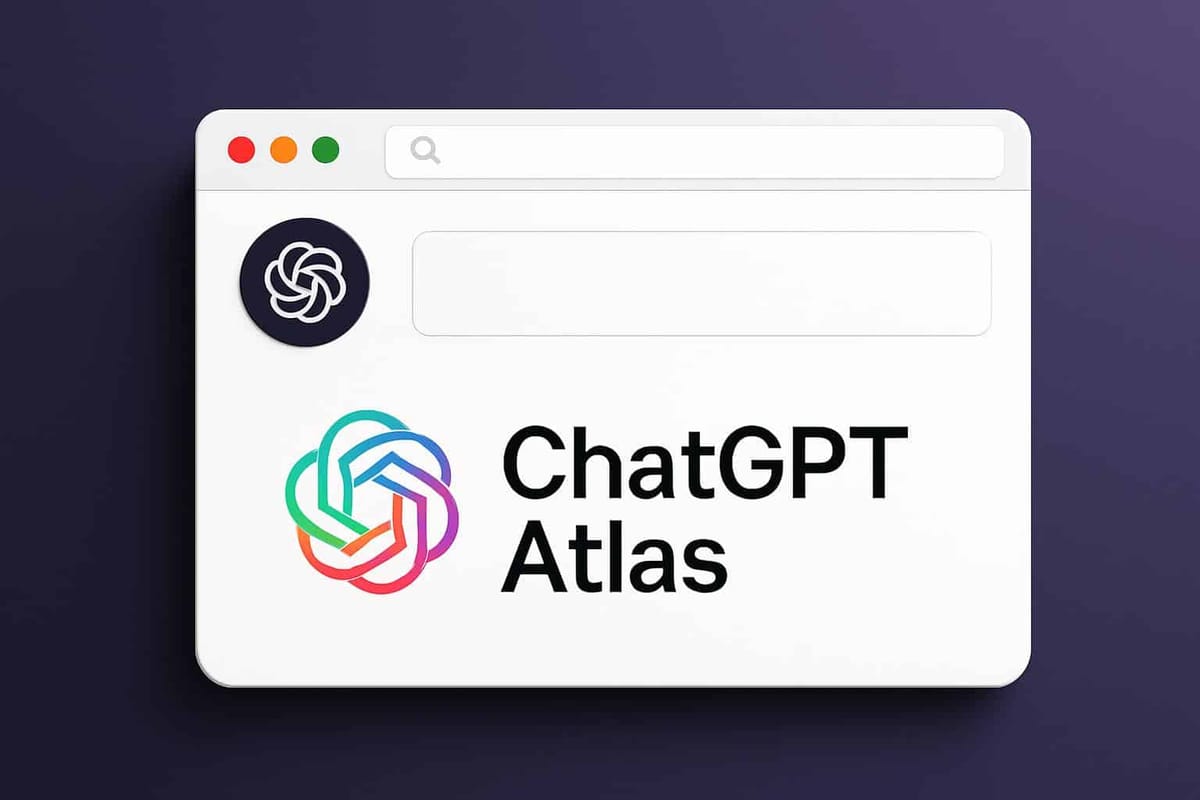Chinese tech giant Alibaba just entered this competitive arena with its Quark AI Glasses, marking a significant shift in the company's product strategy. You might know Alibaba primarily for its business-focused solutions, but these smart glasses represent their first consumer-facing AI product. The timing couldn't be more strategic.
Available for preorder at $659 (4,699 yuan) on Tmall, Alibaba's new smart glasses take on Meta Ray-Bans directly in what's shaping up to be a defining battle for wearable tech supremacy. Meta has already demonstrated the market's potential. Their Ray-Ban smart glasses saw sales triple over the past year, according to EssilorLuxottica data. The success validated consumer demand for AI-powered eyewear that doesn't compromise on style or functionality.
The question now : Can Alibaba's Qwen-powered glasses carve out meaningful market share against Meta's established presence ? The answer depends on several factors, from hardware capabilities to ecosystem integration and pricing strategy.
Alibaba Quark AI Glasses vs Meta Ray-Bans : A Comprehensive Comparison
Quark AI Glasses : Hardware and Design Specifications
Alibaba's entry into the smart glasses arena comes with a price tag of $659 (4,699 yuan), positioning the Quark AI Glasses as a premium offering in the Chinese market. The hardware represents Alibaba's first consumer-facing AI product, marking a significant shift from their traditional business-focused solutions.
The Qwen large language model powers these glasses, bringing substantial AI capabilities to your face. This isn't some experimental tech, Qwen already boasts over 400 million downloads and has spawned 140,000 derivative applications. You're looking at proven AI technology that's been battle-tested across millions of users.
The newly integrated AI Chat Assistant through the Quark app transforms how you interact with the glasses. You can engage in conversations, ask questions, and receive real-time responses without pulling out your phone. This assistant represents a direct challenge to Meta's AI implementation, offering a localized experience tailored for Chinese users.
Core Functionality Breakdown
The Quark AI Glasses deliver essential smart glasses features you'd expect from a modern wearable :
- Voice calls support for hands-free communication
- Music streaming capabilities for audio entertainment
- Real-time language translation breaking down communication barriers
- Eye and gesture tracking technologies enabling intuitive control
These features mirror what you'll find in competing products, but the integration with Alibaba's ecosystem creates a distinctly different user experience.
Meta Ray-Bans : The Market Leader's Arsenal
Meta's smart glasses lineup has dominated the market with impressive momentum. The second-generation Meta Ray-Bans arrived with refined features and improved performance. Meta expanded their portfolio with the Oakley Meta Vanguard variants, targeting different style preferences and use cases. The latest Meta Display models push the boundaries of what smart glasses can achieve.
The numbers tell a compelling story : Meta Ray-Ban sales tripled over the past year, according to EssilorLuxottica data. This isn't just growth, it's explosive adoption that validates the entire smart glasses category. You're witnessing a product that resonated with consumers in ways previous attempts at smart eyewear never achieved.
Feature-by-Feature Analysis
Design Aesthetics
Meta partnered with Ray-Ban and Oakley, leveraging decades of eyewear design expertise. The glasses look like regular sunglasses, removing the "tech nerd" stigma that plagued earlier smart glasses. Alibaba's Quark AI Glasses take a different approach, though specific design details remain limited in available information.
AI Assistant Capabilities
The Quark AI Glasses leverage the Qwen large language model for natural language processing and contextual understanding. You get an AI assistant trained on Chinese language nuances and cultural contexts. Meta's AI assistant, powered by their own LLM, offers multilingual support with a global perspective.
AR/MR Integration
Both platforms incorporate eye and gesture tracking technologies, enabling hands-free control. The implementation differs : Meta focuses on social media integration and content capture, while Alibaba emphasizes practical applications through their service ecosystem.
Ecosystem Compatibility
This is where the compare Alibaba smart glasses with Meta Ray-Bans discussion gets interesting. Meta integrates with Facebook, Instagram, WhatsApp, and Messenger. You're locked into Meta's social universe. Alibaba connects you to Amap, Alipay, Taobao

The Role of Ecosystem Connectivity in Driving Consumer Adoption
The Quark AI Glasses represent Alibaba's strategic move to transform everyday wearable technology into a gateway for its entire service ecosystem. The Alibaba ecosystem integration runs deeper than simple app compatibility. These glasses create a hands-free portal to services that millions of Chinese consumers already use daily.
Amap Navigation Smart Glasses Functionality
The Amap navigation smart glasses functionality allows you to receive turn-by-turn directions without pulling out your phone. You can walk through unfamiliar streets while the glasses provide audio guidance and visual cues, keeping your hands free for carrying bags or holding an umbrella. This integration taps into Amap's extensive mapping data, which covers detailed information about Chinese cities that Western mapping services often lack.
Alipay Payments via Glasses
The Alipay payments via glasses feature pushes convenience to another level. You can complete transactions by simply looking at a QR code and confirming through voice commands or gestures. This eliminates the need to fumble with your phone at checkout counters, making the payment process faster and more seamless.
For a market where mobile payments already dominate daily transactions, this represents a natural evolution of how Chinese consumers interact with digital payment systems.
Taobao Integration
Taobao integration transforms window shopping into instant purchasing opportunities. You spot a product you like, scan it with your glasses, and the system pulls up comparable items on Taobao with price comparisons and user reviews. You can add items to your cart and complete purchases without breaking stride.
Fliggy's Travel Booking Capabilities
Fliggy's travel booking capabilities extend this convenience to trip planning. You can :
- Search for flights and hotels through voice commands
- Receive real-time updates about travel itineraries
- Access booking confirmations and travel documents hands-free
- Get location-specific travel recommendations based on where you're looking
This level of service integration creates a compelling reason for existing Alibaba users to adopt the Quark AI Glasses. You're not just buying smart glasses, you're gaining a more efficient way to access services you already depend on.

Market Trends and Industry Outlook for Smart Glasses
The smart glasses market trends 2024-2030 indicate significant growth ahead. According to industry analysts at Markets and Markets, the sector is projected to reach $4.1 billion by 2030, with a compound annual growth rate of 29.4%. This growth is driven by consumer demand for augmented reality (AR) and mixed reality (MR) capabilities, along with artificial intelligence (AI) features that revolutionize how we engage with digital content.
Shifting Dynamics in the Smart Glasses Market
Alibaba's new smart glasses take on Meta Ray-Bans - here's what they offer in terms of market positioning : a serious challenge to Meta's dominance while validating the broader industry trajectory. You're witnessing a shift where smart glasses evolve from niche gadgets to mainstream wearables.
Expanding Competition Beyond Consumer Products
The competitive landscape extends beyond consumer-focused products. Amazon is testing connected glasses for specialized applications, specifically targeting delivery drivers who need hands-free navigation and package scanning. This diversification demonstrates how different tech giants are carving out distinct market segments :
- Mass-market consumer adoption (Meta, Alibaba)
- Enterprise and specialized use cases (Amazon)
- Ecosystem-integrated experiences (Alibaba's service integration)
Key Factors Driving Adoption Rates
AI capabilities, eye and gesture tracking advancements, and improved AR/MR technologies are the primary drivers accelerating adoption rates. You're seeing a convergence where hardware innovation meets software intelligence, creating devices that anticipate your needs rather than simply responding to commands. The market isn't just growing, it's maturing into distinct categories serving different user requirements.

Pricing, Availability Insights for Quark AI Glasses & Implications for Global Competition
The price of Quark AI Glasses for early adopters in China is set at 4,699 yuan (approximately $659) for those who place preorders through Tmall. This strategic pricing makes Alibaba's first smart glasses competitive with Meta's Ray-Ban models, which are priced between $299 and $379 depending on the variant. Shipping is scheduled to start in December, giving Alibaba an important opportunity during the holiday season to attract consumers in the largest wearable tech market globally.
A Different Approach to Hardware Launches
Alibaba's strategy is different from typical hardware launches. Instead of relying solely on selling devices, the company is using its entire cloud infrastructure, Alibaba Cloud, to power these glasses. This integration creates a comprehensive system that few competitors can match in China.
The Qwen large language model running on these glasses uses the same computational resources that support millions of business applications across Asia. This means that Alibaba isn't just selling hardware; they're also creating a smooth connection between their existing services and a new type of personal computing device.
The Competitive Landscape in China
The competition in China has an interesting dynamic right now. On one side, you have domestic innovation driven by Alibaba's deep understanding of local consumer preferences and payment habits. On the other side, there's Meta with its global brand recognition and established experience in smart glasses.
- Meta can't integrate Alipay or Taobao into their Ray-Bans the way Alibaba can with Quark AI Glasses.
- You can't book travel through Fliggy or navigate using Amap with Meta's devices in China.
This advantage of having an ecosystem is extremely important in the Chinese market. Consumers there expect their devices to work seamlessly with local services. Alibaba's first consumer-facing AI product isn't just competing based on hardware specifications or AI capabilities. It's also competing on how well these glasses fit into the daily lives of Chinese users.
The Significance of Pricing Strategy
The pricing strategy reflects confidence in this ecosystem value. At $659, Alibaba isn't trying to compete solely on price. Instead, they're betting that integrated functionality will justify a higher position in their home market.
Conclusion
Alibaba's new smart glasses take on Meta Ray-Bans - here's what they offer, but the path forward presents significant hurdles. Ecosystem lock-in remains a critical concern : users deeply embedded in Alibaba's services gain maximum value, while those outside China face limited functionality. User experience refinement will determine whether these glasses move beyond early adopters to mainstream acceptance.
The future outlook smart glasses rivalry between Alibaba and Meta creates a competitive pressure cooker that benefits you as a consumer. When tech giants compete, innovation accelerates. You'll see :
- Faster feature rollouts and software updates
- More competitive pricing strategies
- Enhanced AI capabilities across both platforms
- Broader third-party app integrations
This competition pushes both companies to refine their offerings continuously. Meta must respond to Alibaba's aggressive pricing and ecosystem integration, while Alibaba needs to match Meta's design partnerships and global appeal. The rivalry transforms smart glasses from niche gadgets into practical daily tools, expanding the AR/MR wearable market for everyone worldwide.
FAQs (Frequently Asked Questions)
What are Alibaba's Quark AI Glasses and how do they compare to Meta Ray-Ban smart glasses ?
Alibaba's Quark AI Glasses are a new entry into the consumer-facing AI smart glasses market, featuring advanced capabilities like the Qwen large language model, AI chat assistant, eye and gesture tracking, music streaming, and real-time language translation. Priced at approximately $659 for early preorders in China, they directly compete with Meta's popular Ray-Ban smart glasses lineup known for their AR/MR features and ecosystem compatibility. Both offer unique hardware designs and functionalities tailored to enhance user interaction with integrated AI technologies.
How is the smart glasses market expected to grow from 2024 to 2030 ?
The smart glasses market is forecasted to grow at a compound annual growth rate (CAGR) of 29.4% from 2024 through 2030, reaching an estimated value of $4.1 billion by 2030. This growth is driven by increasing consumer demand for augmented reality (AR) and mixed reality (MR) devices equipped with integrated AI features, as well as innovations from major tech players like Alibaba, Meta, and Amazon.
What ecosystem integrations do Alibaba's Quark AI Glasses offer to enhance user experience ?
Alibaba's Quark AI Glasses deeply integrate with the Alibaba ecosystem, including Amap for navigation and Alipay for seamless payment transactions directly through the glasses. Additionally, apps like Taobao and Fliggy extend functionality by enabling shopping and travel bookings via the smart glasses interface, providing a comprehensive connected experience that leverages Alibaba Cloud services alongside hardware innovation.
What are the key technological features of Alibaba's Quark AI Glasses ?
Key features of Alibaba's Quark AI Glasses include support for calls, music streaming capabilities, real-time language translation, eye and gesture tracking technologies, and an integrated AI chat assistant powered by Alibaba’s Qwen large language model. These features aim to provide a versatile smart wearable that enhances communication, entertainment, and productivity within an intuitive user interface.
How does pricing and availability of Quark AI Glasses impact the global competition in smart wearables ?
Quark AI Glasses are currently available for early preorder in China at approximately $659 (4,699 yuan), with shipping expected in December. This competitive pricing combined with Alibaba’s integration of cloud services positions them as a strong domestic innovator challenging global giants like Meta. Their entry into the market reshapes China's wearable tech landscape and intensifies competition in advancing mixed reality consumer products worldwide.
What challenges and future outlook exist for the rivalry between Alibaba’s Quark AI Glasses and Meta Ray-Bans ?
Potential challenges include ecosystem lock-in battles where consumers may prefer one platform over another due to service integration, as well as ongoing refinement of user experience to meet diverse needs. However, this rivalry is expected to accelerate innovation in AR/MR wearable technology globally, ultimately benefiting consumers through improved features, expanded functionalities, and more competitive pricing in the evolving smart glasses market.




